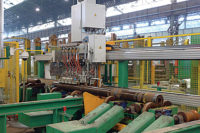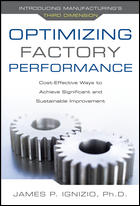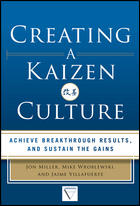
APR has the capacity to test 100% of the tubes in the time other methods can only inspect a sample. Source: AcousticEye Inc.
Tube inspection is nothing new in the nondestructive testing (NDT) industry. Power plants, refineries, petrochemical plants and many others have been inspecting their heat exchangers for decades. But the major drawback of current methods is one decisive factor: speed.
For any plant, inspection translates to downtime, and downtime can result in revenue loss. With severe constraints on inspection time, current methods rarely enable 100% inspection of all tubes. Instead, inspection teams resort to sampling, often testing less than 10% of the entire tube population, hoping that they catch the problematic tubes in the process. However, missing one faulty tube can cause an expensive failure much sooner than the next planned outage.
Local vs. Long Range Sensing
The reason that traditional heat exchanger inspection solutions are slow is that they employ local, invasive inspection methods. Put another way, they have to physically scan the length of each tube.The technologies behind the two main contenders, eddy current (ET) and ultrasound (internal rotating inspection system or IRIS), were not originally conceived for tubes. Both methods employ probes that can examine a surface in their immediate vicinity. Various adaptations must be made in order to use them to inspect the entire length of a tube.
Aside from adaptations to the internal structure of the probe, this means attaching long cables to enable pulling and/or pushing the inspection probes down the tube and back. The speed with which the probes can be pushed through the tubes is limited: pushing them too fast degrades the accuracy of the inspection. The net result is that eddy current, at its fastest, can examine about one foot of tubing per second, while ultrasound is even slower, by about an order of magnitude.
An innovative technology, acoustic pulse reflectometry (APR), has the potential to change the heat exchanger inspection market. It is based on a set of completely different principles that enable long-range sensing, similar to those found in geophysical explorations.
Since drilling holes in the ground is extremely expensive, this type of exploration often is performed by carrying out carefully controlled explosions on the earth’s surface. These explosions create mechanical waves that propagate to the interior, and then reflect back toward the surface wherever they encounter a change in rock composition. These reflections can be measured and then analyzed to determine the properties of the different rock layers.
APR applies the same general principles, letting mechanical waves-in this case acoustic waves-do the probing. However, instead of sending these waves down a solid, they are propagated down the air enclosed by a tube.
Such acoustic waves have a simple property. As long as the tube is perfectly uniform on its inner surface, a wave propagating down the tube will continue unimpeded. However, if any type of change in cross section is encountered, the wave splits into two: one component is reflected back up the tube, the other continues to propagate in the same direction.
Different types of disturbances in the cross section will cause the particular shapes of the reflected waveforms to be different. Thus, the wave propagating down the tube acts as a virtual probe, propagating at the speed of sound, with no need for any cables or mechanical probes. The reflections act as messengers that report on any changes in the internal surface of the tube, and if they are recorded and analyzed, the condition of the tube can be deduced.
Assuming the wave sent down the tube has the form of a single sharp positive pulse, any constriction-such as a partial blockage, from sediment, for example-will create a reflection whose shape is a positive followed by negative pulse. If, on the other hand, some form of wall loss is encountered, such as wall thinning or pitting, the reflection will be opposite: a negative pulse followed by a positive one. Finally, a through hole penetrating the entire tube wall will cause a typical smeared negative pulse followed by a low positive tail.

Using acoustic pulse reflectometry, you can inspect every tube, regardless of size, configuration or material. Source: AcousticEye Inc.
Signals vs. Noise
APR is not new. It has been applied in academic labs for many years and is now being used successfully for heat exchanger inspection.Several technological hurdles had to be overcome to transform a physical principle into a useful industrial tool. The major obstacle-noise-is straightforward to comprehend, though not easy to overcome.
When carrying out acoustic measurements, ambient noise can often drown out the signals of interest. Particularly, the reflections from small faults, such as narrow but deep pits, will be weak, even though they may be of considerable importance to the operator. The strength of the signal, as compared to the ambient noise, is known as signal-to-noise ratio (SNR). The higher it is, the more sensitive the measurements.
There are several paths toward increasing SNR, such as increasing the amplitude of the signal (potentially introducing nonlinear distortions), or the duration of the signal (raising measurement time per tube). However, the most effective and time-efficient method uses carefully conceived signals known as pseudonoise, increasing SNR considerably, while maintaining very short measurement times.
Good engineering means combining all the possible avenues to get the best result, through judicious use of electronic and acoustic components, correctly conditioned signals and additional signal processing techniques, APR technology has achieved very high SNR values. This results in a sensitive system, while keeping the time required to inspect a single tube at only 10 seconds. That is nearly an order of magnitude faster than most other methods and is independent of tube length.

Here is an example of a measurement along with fault detection thresholds. Notice the fault at approximately 6.5 feet. Source: AcousticEye Inc.
Benefits of APR
The following benefits highlight how APR is reducing risks and increasing efficiency:Eddy current testing, on the other hand, requires a calibration standard, for example, a sample tube with carefully manufactured defects, for every type of material, diameter and wall thickness. Typically, eddy current inspectors must stock hundreds of such standards at a high price.
Thus, it is straightforward to detect and size faults, comparing the peak reflections to sets of predetermined thresholds. This comparison can be easily performed by software, which can scan through the measurements from hundreds of tubes in seconds, automating the data analysis phase and rendering it objective.
Again, this is in contrast to analysis of eddy current readings, which must be painstakingly analyzed by highly trained technicians-a very lengthy and subjective process.
Second, acoustic waves propagate easily through u-bends, coils and spirals which preclude the insertion of any form of probe.
APR in the Field
The advantages of short inspection time, short analysis time, independence of tube material and objective flaw assessment are resulting in widespread acceptance of APR. With the capacity to test 100% of the tubes in the time other methods can only inspect a sample, APR can be used as a rapid screening tool for heat exchangers that have primarily ID problems, such as air-cooled finned tube heat exchangers.Typically these heat exchangers pose many difficulties to eddy current and its variants, due both to their composition (mainly ferromagnetic alloys) and the presence of fins.
APR also has been applied to inspection of reactors in chemical plants. Reactors resemble heat exchangers, though they operate at elevated temperature and pressure levels, causing failures in the form of both bulges and collapse of tubes. Both faults present a great challenge to traditional methods: bulges cause the tube wall to separate from eddy current probes, precluding any estimate of their extent, whereas tube wall collapse simply blocks the passage of any physical probe.
Another unique application of APR is in assessment of the internal cleanliness of heat exchanger tubes. While tubes are routinely cleaned during turnaround periods, to remove any deposits hampering their functionality, to date the only method to assure that cleaning has been carried out correctly is through the use of videoscopes, which is extremely slow.
In an APR inspection, tubes that were not properly cleaned will demonstrate multiple reflections from the constriction caused by such deposits, providing a rapid and cost effective assurance of tube cleanliness as the inspection is carried out.
With the growing adoption of APR within the tube and pipe testing market, companies will be able to prevent many critical failures and avoid serious catastrophes through comprehensive inspection and maintenance not previously possible. The result is a new, easier, faster and more objective way to ensure the safety and efficiency of critical systems.






